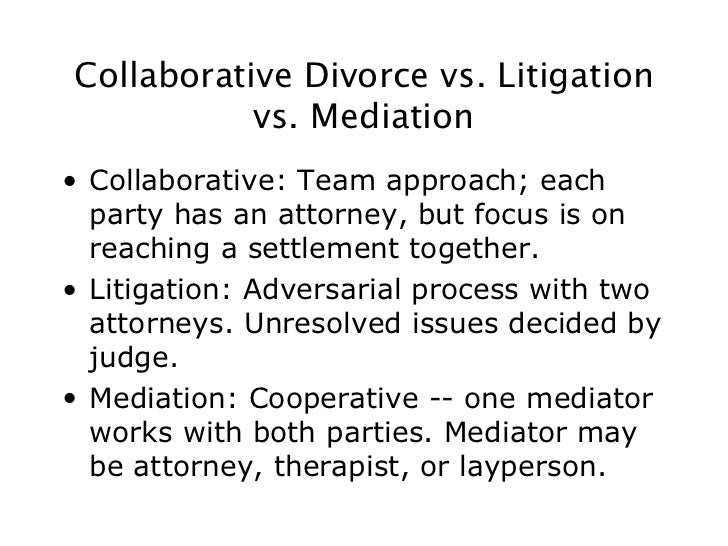and collaborative law are alternative dispute resolution methods that differ significantly from traditional litigation. While litigation involves resolving disputes through a court process, mediation and collaborative law focus on finding mutually agreeable solutions outside of the courtroom. Here is a detailed explanation of the differences between these approaches
Table of Contents
Mediation
Mediation is a voluntary and confidential process where a neutral third party, known as the mediator, facilitates communication and negotiation between the parties involved in a dispute. The mediator does not make decisions or impose solutions but helps the parties reach a mutually acceptable agreement. Here are some key characteristics of mediation
a. Voluntary
Mediation is a voluntary process, and all parties must agree to participate. They can withdraw from mediation at any time if they feel it is not productive.
b. Neutral mediator
The mediator is an impartial third party who does not take sides or advocate for any party. Their role is to guide the conversation and help the parties find common ground.
c. Informal and flexible
Mediation is less formal than litigation, and the process can be tailored to the specific needs of the parties. It allows for open discussions and creative problem-solving.
d. Empowerment and control
Mediation empowers the parties to actively participate in the resolution of their dispute. They have control over the outcome and can shape the agreement according to their interests.
e. Confidentiality
Mediation is a confidential process, meaning that discussions and information shared during mediation cannot be used in court if the mediation fails.
Collaborative Law
Collaborative law is another alternative to traditional litigation that focuses on resolving disputes through cooperation and negotiation. It involves the parties and their attorneys working together to find a mutually beneficial solution. Here are some key characteristics of collaborative law
a. Voluntary commitment
The parties and their attorneys sign a participation agreement committing to resolve the dispute outside of court. If the collaborative process fails, the attorneys must withdraw, and the parties may proceed to litigation.
b. Team approach
Collaborative law encourages a team-based approach, where the parties may involve other professionals such as financial advisors, therapists, or child specialists to address specific issues.
c. Interest-based negotiation
Collaborative law emphasizes identifying the underlying interests and needs of the parties rather than focusing solely on legal positions. This allows for more creative and customized solutions.
d. Open and transparent communication
The parties commit to open and honest communication, sharing information and concerns openly. This fosters trust and helps in finding mutually agreeable solutions.
e. No court intervention
In collaborative law, the parties work together to reach an agreement without court intervention. This promotes a cooperative environment and reduces adversarial dynamics.
